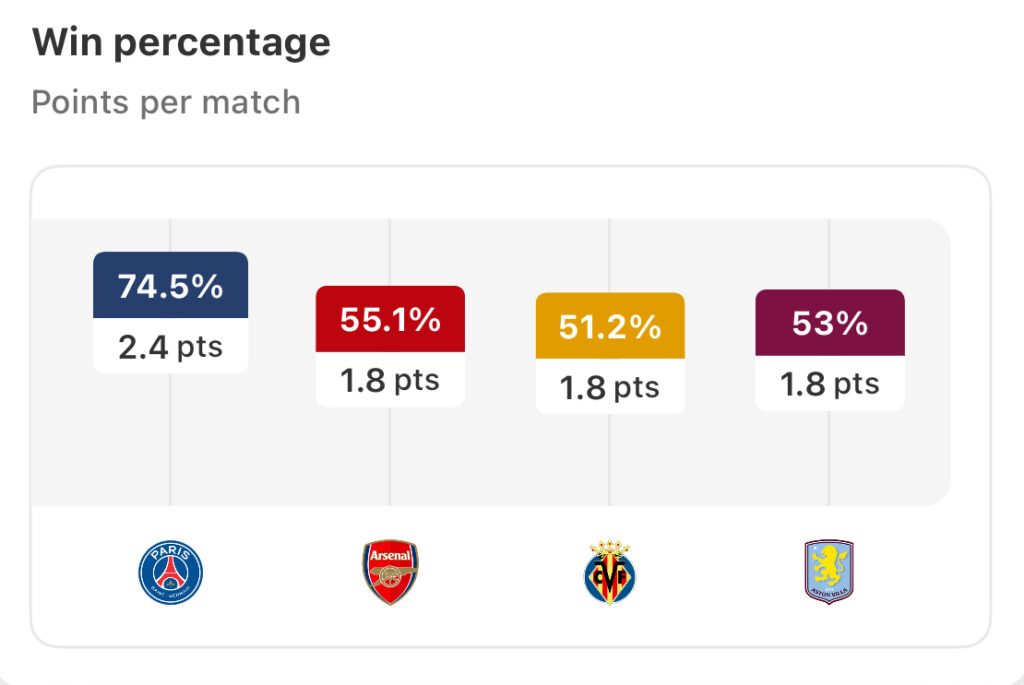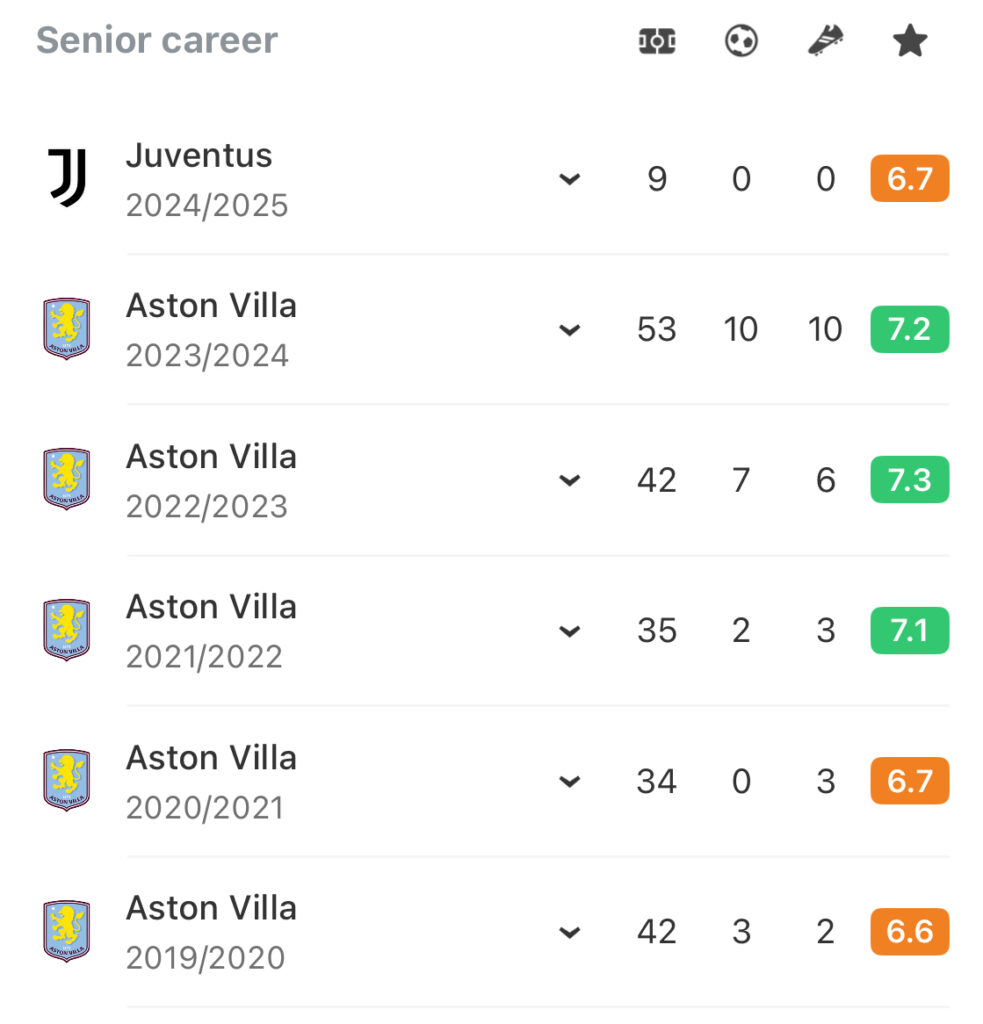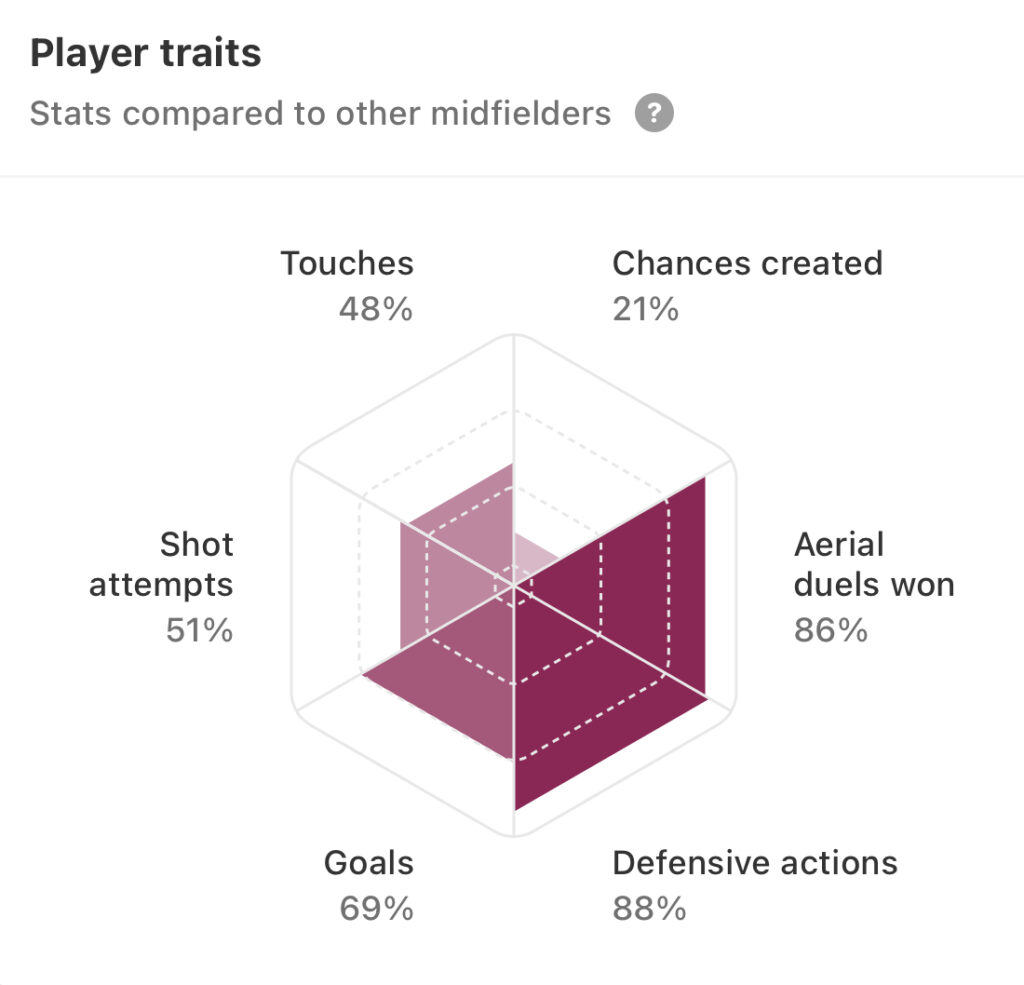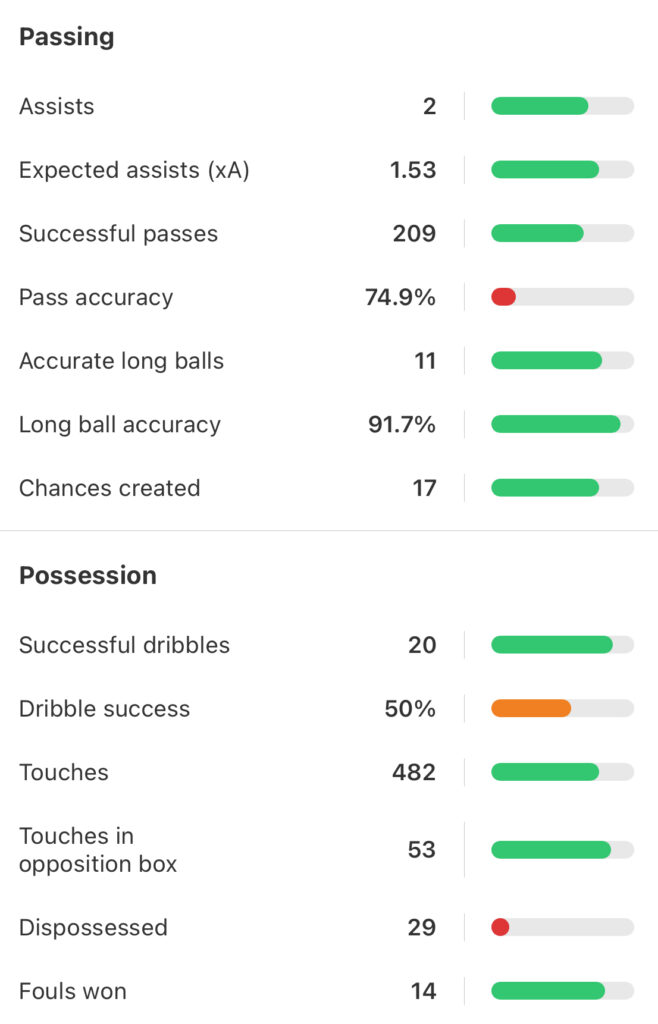In a post-Douglas Luiz era, Aston Villa’s midfield has undergone a seismic shift. The emergence of fresh faces and a new dynamic offers a stark contrast to the successes of a season ago. The result is a midfield with potential, but one that requires patience.
By Josh Gans
Saturday’s draw against Crystal Palace marked Unai Emery’s 101st match in charge of Aston Villa, boasting an impressive 53 wins, 20 draws, and 28 defeats. Under his leadership, Villa transformed from a relegation-threatened side to a Champions League contender, achieving an unlikely push for Europe two seasons ago and a top-four finish last season.

After qualifying for the Champions League for the first time in 41 years, Aston Villa has seen a squad overhaul, particularly in midfield. In its development, Villa has utilised a combination of academy talent, practical signings and the sale of Jack Grealish, arguably their most talented player in the Premier League era, to boost development and build a capable well rounded squad.
Last season’s success could point to many contributing factors. Ollie Watkins stole the show with his prolific 40 goal contributions. The reliance on experienced veterans like John McGinn and Lucas Digne played a substantial role, as did energetic attackers such as Jacob Ramsey, Leon Bailey and Moussa Diaby. But perhaps the most significant influence in Aston Villa’s emergence under Emery was defensive-midfielder-turned-maestro Douglas Luiz.

The Brazilian saw the field in all but fifteen Premier League matches in his five years with the club, offering a level of durability needed to steer the ship. He became more of a staple in the team and finally recieved his flowers when he took on a more attack-minded approach under the Spaniard’s supervision. His defensive stability quickly turned into a pivotal role in the way the side ticked over.
Emery utilised a 4-4-2 system that heavily relied on Luiz’s contributions, partnering alongside Youri Tielemans. This freed him to provide a more advanced box-to-box role. Luiz led the team in chances created last season (53), and provided 20 goal contributions. Their success was determined by an expansive, attack-first style that creates as many opportunities as it leaves open defensively.
The Villans used the newfound spending power from their Champions League qualification to spend €176m on much-needed depth pieces with experience and young talent. The biggest statement was the inevitable departure of Luiz – who had now become a household name and attracted interest from the biggest clubs – replacing him with Everton’s standout Amadou Onana.
Douglas Luiz’s departure for Juventus – Villa’s opponents in the Champions League tonight – was always going to leave a gaping hole that Onana would have to fill, but they offer contrasting qualities. Onana anchors with a more defensive role, acting as a rock in front of the back four. Towering at 6’5”, the Belgian is a more intimidating, less dynamic presence. His start to life in Birmingham went better than he could have imagined, scoring just four minutes into his debut.

Perhaps the most impactful addition has been 22-year old Morgan Rogers. Signed in January, his influence has been nothing short of consequential. Set up as an attacking midfielder, he plays more of a centre forward supporting role to Watkins that perhaps best emulates Moussa Diaby, who left for Saudi club Al Ittihad in the summer. He excels in recovering possession in dangerous areas, ranking highly among Premier League midfielders in related metrics. The energy Rogers brings to the fans and the team by winning a ball in the final third or making a surging run past two or three defenders cannot be measured, but has evolved the outlook of Aston Villa’s attack.

However, the absence of Luiz should not be understated. What was once an attack-minded 4-4-2 between Tielemans and Luiz complimenting each other with simplicity, is now a less cohesive 4-4-1-1 with two brand new profiles for Tielemans to adjust to. Rogers has changed the way they create opportunities, but Tielemans has been forced to adapt into a more advanced role and become the main creative outlet, now marginally leading the team in chances created (28), xA (2.6), and assists (4).
Despite a strong start – including a win over Bayern Munich, and topping the Champions League table after three weeks – Villa are now winless in six, have slipped to eighth in the league, lost to Club Brugge in the Champions League, and been knocked out of the Carabao Cup. The demanding Champions League schedule has taken its toll – as it did on Newcastle last season – and Onana was injured while on international duty. Scoring-wise, they are on pace for just 60 goals compared to last season’s 76.
It’s not time to hit the panic button, however. Onana’s setback provided Ross Barkley with an opportunity to score the equaliser against Palace, and presented more bandwidth for Tielemans to create. Boubacar Kamara will soon have the opportunity to move back into the lineup following his ACL injury. He has a more similar profile to Douglas Luiz, offering creativity moving forward, while providing solid defensive stability. This will provide a chance to regain a starting role and offer an alternative approach.
Villa also rank third in the Premier League for big chances created (41), and lead the league in big chances missed (28). In the 2-2 draw against Palace, they won the xG battle by 1.85 goals. They are still creating opportunities in bunches, just not executing them yet.
Villa fans should remain optimistic. The midfield is beginning to gel, but it’s bound to experience some turbulence in its transition. The squad is experiencing a drastic shift in its foundation, with more depth and experience than a year ago, and the personnel to get the ball rolling. They have the chance to make a statement in the Champions League and finish back in a European spot in the league. Finishing in the top four is still a possibility, but this season is about establishing themselves as a top club that is here to stay, and they should have full confidence they will do just that.
(Cover image from IMAGO)
You can follow every game from the Premier League with FotMob this season – featuring deep stats coverage, xG, and player ratings. Download the free app here.
